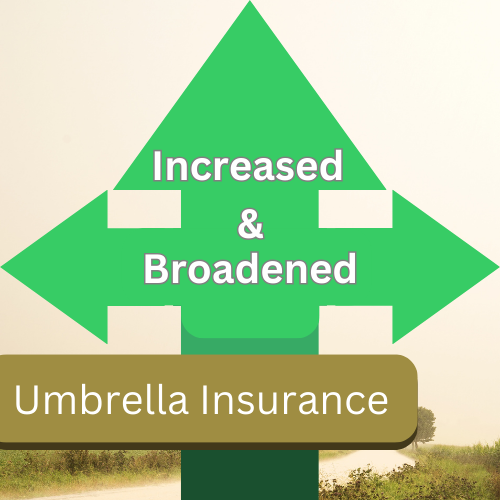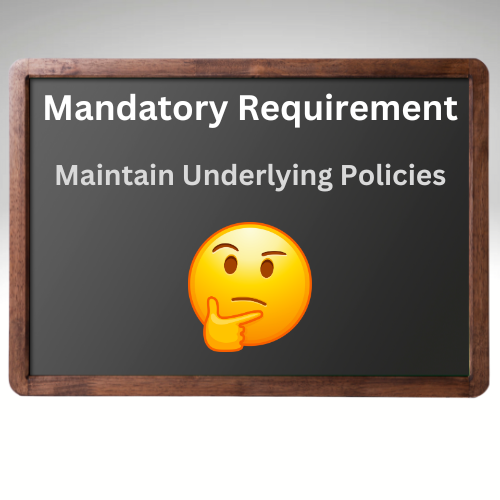
What You Need to Know
Protecting Your Farm and Ranch Assets with Umbrella Insurance
Farming and ranching operations in Montana involve substantial investments in land, equipment, and livestock. These assets are crucial for the success and continuity of your operation, but they can also be at risk in the event of a large liability claim.
Whether it’s a farm accident, a product liability claim, or property damage caused by your operation, legal judgments can put your assets in jeopardy. This is where Farm & Ranch Umbrella Insurance plays a vital role.
Umbrella insurance provides an extra layer of liability protection that extends beyond the coverage limits of your standard farm liability, auto liability, or homeowners insurance policies.
With the rising costs of legal settlements, having this additional coverage can be the difference between safeguarding your assets or facing financial ruin.

Why Farm & Ranch Umbrella Insurance is Essential
Large Liability Judgments and Asset Protection
Agricultural operations often require significant capital investments in land, buildings, and equipment.
If you or your farm is found negligent in an accident or legal dispute, the damages awarded could easily surpass the limits of your primary insurance.

If this happens, a court might require you to sell off assets to cover the judgment.
Umbrella insurance helps protect your assets by covering liability costs that exceed the limits of your underlying policies, such as farm liability, auto liability, and commercial general liability (CGL).
Umbrella Insurance vs. Excess Liability Insurance
It’s important to understand the difference between excess liability insurance and umbrella insurance:
- Excess Liability Insurance: This operates in a “vertical” manner, meaning it increases the limits of your existing policies without expanding the scope of coverage. It essentially adds higher limits to your underlying farm or auto liability policies.
- Umbrella Insurance: This not only provides higher limits but also broadens the scope of coverage, covering incidents that your primary policies might not. For instance, if your primary farm liability policy excludes certain personal injury claims or environmental incidents, umbrella insurance may cover these gaps. Additionally, umbrella insurance can “drop down” to cover claims if your underlying policy limits are exhausted.


Scope of Coverage for Farm & Ranch Umbrella Policies
Unlike standard farm liability or CGL policies, umbrella policies are not standardized.

This means coverage can vary between insurers, and it’s crucial to review each policy carefully. However, there are common features that make umbrella insurance indispensable for farm and ranch operations:
- Higher Liability Limits: Provides additional coverage for claims that exceed the limits of your farm, general, or auto liability policies.
- Broader Coverage: Covers claims that may not be included in your primary policies, such as personal injury (libel, slander, mental anguish), pollution incidents, and certain types of property damage.
- Drop-Down Provision: If your primary insurance limits are reduced or exhausted due to claims, umbrella insurance can “drop down” and provide coverage, preventing gaps in protection.
Terms and Conditions: Understanding Your Umbrella Policy
Indemnify vs. Pay on Behalf of

When reviewing an umbrella policy, you will likely encounter two types of coverage agreements:
- Indemnify: The insurer reimburses you for damages after you have made payment to a third party.
- Pay on Behalf of: The insurer directly pays the third party for any covered damages. This is generally the preferred type of coverage since it reduces out-of-pocket expenses for the insured.
Defense Costs
Umbrella policies typically cover defense costs in addition to damages, meaning the insurer will provide and pay for legal defense even if the claim does not result in a financial settlement.
This type of coverage, known as defense outside the limit, ensures that your liability limits are preserved for the actual damages, with legal fees covered separately.
Self-Insured Retention (SIR)
Umbrella policies often include a self-insured retention (SIR), which functions similarly to a deductible. This applies when the umbrella policy provides coverage for a claim that is not covered by your primary insurance.
The SIR amount is the portion of the loss you are responsible for before the umbrella policy pays out.

Coverage for Unique Farm and Ranch Risks
Umbrella insurance for farms and ranches can be customized to include coverage for risks that are unique to agricultural operations:
- Pollution Liability: Covers incidents such as chemical spills, manure runoff, or pesticide drift, which could result in costly environmental clean-up or third-party claims.
- Personal Liability: Given that farm life often blends home and business, personal liability coverage is critical. For example, if a visitor is injured during a farm tour or event, your umbrella policy can provide the necessary protection.
- Product Liability: If your farm sells products directly to consumers, such as produce or processed goods, product liability coverage under an umbrella policy can help protect against claims arising from foodborne illness or injuries caused by faulty equipment.
Common Underlying Policy Requirements

To ensure that umbrella coverage is triggered properly, many insurers require the insured to maintain specific underlying policy limits.
Typical requirements include:
- Farm Liability: $1 million per occurrence, $2 million aggregate
- Commercial Auto Liability: $1 million combined single limit per accident
- Employers Liability: $1 million per accident, $1 million occupational disease, $1 million aggregate
- Watercraft Liability: $2 million per accident
Failure to maintain these underlying limits could result in coverage gaps, making it essential to regularly review and update your primary policies to meet these thresholds.
Why Umbrella Insurance is a Critical Investment
Farm and ranch umbrella insurance is a vital safeguard for agricultural operations that face a wide range of liability risks. From potential lawsuits to environmental incidents, this extra layer of protection can be the difference between weathering a financial storm or losing your farm altogether.
By providing higher liability limits, broader coverage, and drop-down provisions, an umbrella policy offers peace of mind and ensures that your farm or ranch is protected from the unforeseen.

To learn more about how an umbrella policy can fit into your overall insurance plan, contact us at Armor Insurance Agency.

